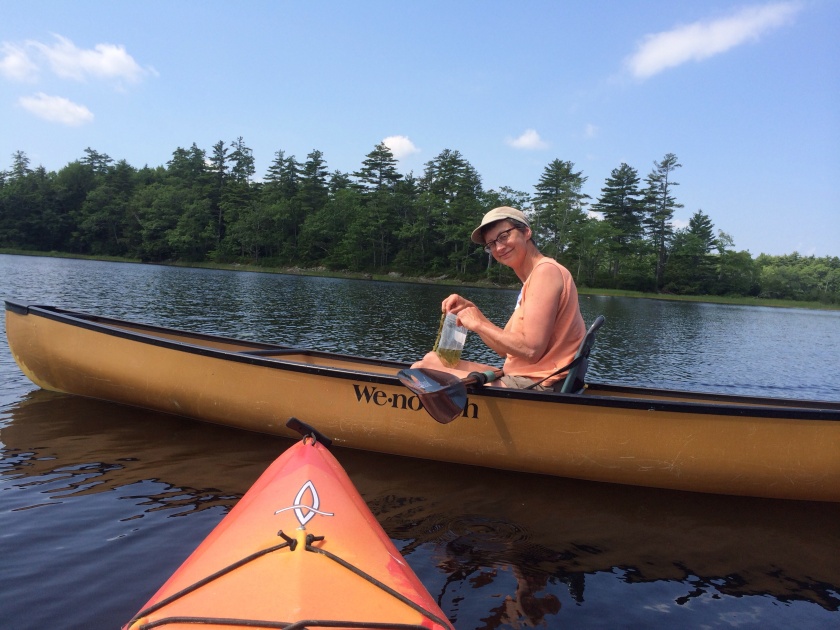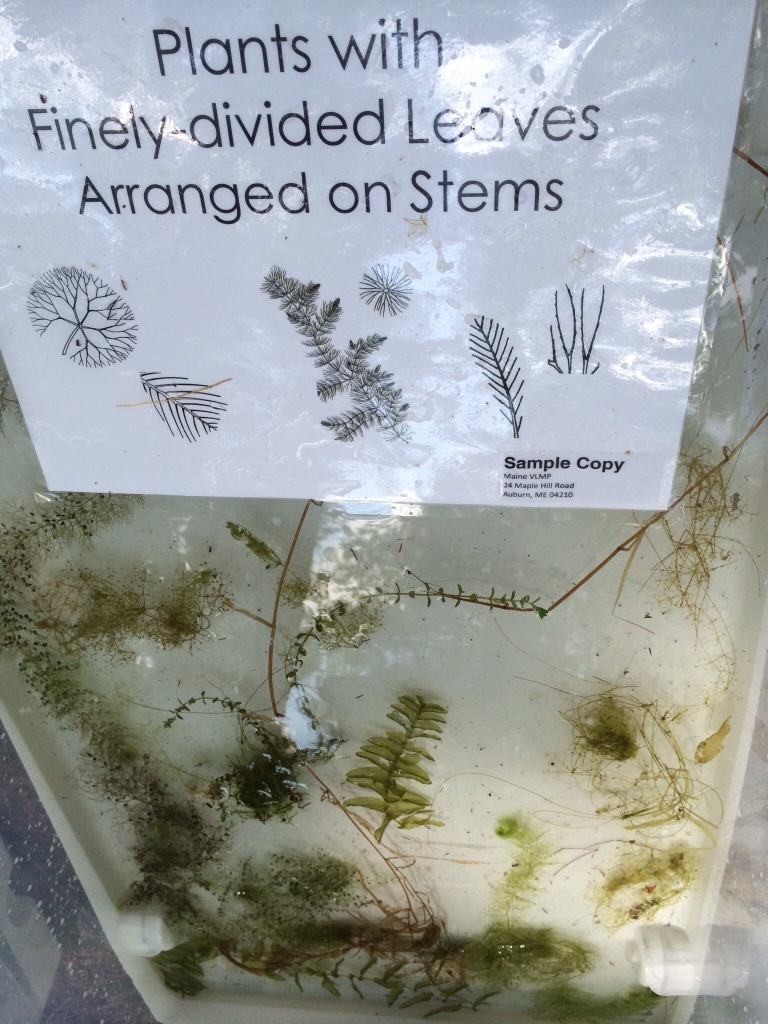
Back in 2009, a man named Dick Butterfield did what I did yesterday. He attended his first workshop with the Maine Volunteer Lake Monitoring Program (VLMP), to start learning to identify dangerous invasive aquatic plants. His thirst for knowledge, combined with concise, effective training, soon saved one of our local lakes.
No doubt armed with his mini waterproof identification key to the 11 most-unwanted suspects, he ventured out on his very first patrol, on nearby Damariscotta Lake. And found hydrilla, which the Maine DEP calls “the most problematic invasive plant in North America.” The lake is huge, with 45 miles of shoreline, but volunteers and experts sprang into action to contain the hydrilla in the tiny cove where Dick had found it. Dick caught it early, which is critically important in the fight against invasives.

Our workshop was information-packed, but my message for you is simple. In Roberta’s words, “The work of citizen scientists [volunteers] on the the front line is the most important piece in this fight.” Training focuses on just those 11 likely culprits, which fall into three main structural categories. That means that some types of plants (like hairy, grass-like stuff) you see can just be ignored. To demonstrate how easy screening samples can be, VLMP recently set up a table at L.L. Bean and taught willing shoppers how to use the key. Their average time to key out a sample was just two minutes.

I was invited to yesterday’s workshop by the Pemaquid Watershed Association, which I’ve belonged to for many years. One of my resolutions for 2017 was to become a more active PWA volunteer. I’ve been writing some press releases and plan to volunteer for plant patrols on McCurdy Pond, where I often keep my canoe. If you’re interested in learning more, visit the Maine Volunteer Lake Monitoring Program or take a peek at the Key to the Eleven Most Unwanted Invasive Aquatic Plants.

Such an important job!
LikeLiked by 1 person
Laurie, you might be interested in knowing that the towns that border Damariscotta Lake all raise money at town meetings to help pay to beat the invasive plants…that is the towns of Newcastle, Nobleboro, and Damariscotta.
Pat
LikeLiked by 1 person
Pat, it’s interesting and heartening to think that there are so many partners in this fight. We are fortunate to have concerned citizens working through their town governments, as well as other strong area conservation organizations, such as the Damariscotta River Association and the Midcoast Conservancy. The latter recently hosted a terrestrial invasive plant training session.
LikeLike
Dear Laurie, How succinctly you explain our training! Thank you for sharing this critical information. You are the best. Mary
Sent from my iPad
>
LikeLiked by 1 person
Thanks Mary – I wanted readers to understand that learning even a small amount about aquatic invasives could be very valuable, as we paddlers are the ones out there on the water all the time. Plus, it’s just fun to know the names of the species you see on the lake!
LikeLike